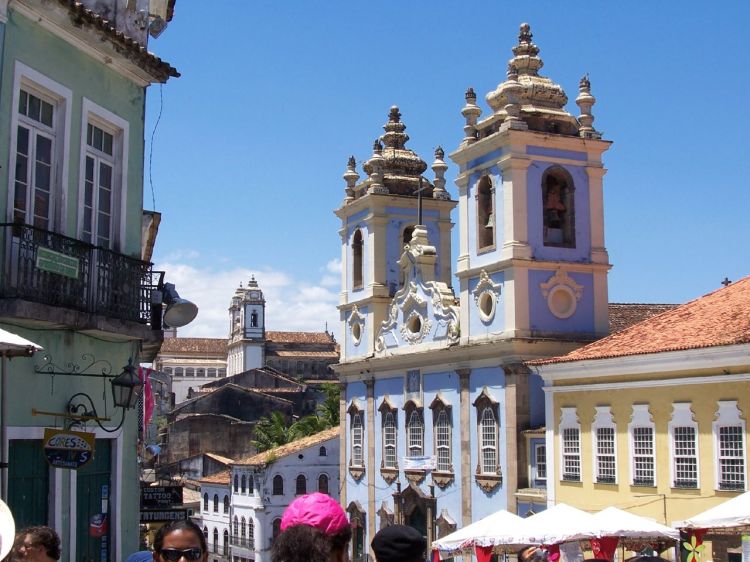In Suriname there is an odo or saying:
Mi na bana bon, o moro y’e trowe doti tap’ mi, o moro m’e fatu.
Translation: I’m like a banana tree, the more dirt/manure is thrown at me, the fatter I get.
It’s an odo about resilience. About being able to not just withstand in times of adversity, but also come back stronger. I find myself remembering this odo all the time while researching black African history, and then especially the history and cultural practices of black people of the diaspora.
The signs of our resilience are omnipresent. However, these following symbols are, in my own humble opinion, the most important testaments to this.
The steelpan
” It has been said, whenever the enslaved peoples escaped from man’s inhumanity to man, they headed to the Hills of Laventille“, and it was here in this old Trinidadian neighborhood that the steelpan was born in the 1930s. African Percussion had been banned by the British colonial government during the end of the 19th century, but did that deter us? No. Did we let that silence us? Of course not. “No drums allowed? Well, then we’ll create a new instrument that allows us to do the same thing”, and with that we created the now national instrument of the island out of frying pans, dust bins and more recently oil barrels. And what a powerful instrument it has evolved in. The pioneers and inventors of the modern steel pan instrument” are geniuses in my opinion. Because only a genius would look at a 55 gallon oil barrel, something which, after fulfilling its purpose of storing dangerous chemicals, usually ends up as trash, and think: “You know, this would make a great music instrument, if I’d just sink the lid, and the acoustics can probably enhance when I fire the metal”
And don’t get me started on the skill level of the pannists. I especially love this performance because it shows a steelband filled with young pannists, hopefully signifying that this art form is far from dead.
Source: KalindaProductions on Youtube
Honorable mentions: This arrangement of Woman on Da Bass , this performance at the Panorama festival, and also this one.
Igreja Nossa Senhora do Rosario dos Pretos (Church of Our Lady of the Rosary of the Black People)

Pelourinho in Salvador, Bahia, Brazil, 2007, Flickr , elicrisko
This church is located in Salvador Bahia in Brazil. The city is rumored to be the blackest city outside of Africa. Now, if the story of how this building came to exist doesn’t show how resilient we are, than I do not know what else does.
As most readers of this blog already know, one of the many crimes the European colonial forces committed against the African people they had enslaved, was to ban African religions and to enforce their own European religious beliefs upon them. However, resilient as we are, many enslaved Africans in mostly the Latin American countries, started to link the Catholic Saints to the African ancestral spirits they were used to worshiping and thus working their way around this ban. This religious practice is still very much present all throughout Latin America.
At one point in time, a group of enslaved and free people of African descent wanted to have their own church where they could practice their “syncretized” religion. It took them a while to receive permission for that, but they finally did in 1704, and they started constructing. It would take a whooping 76 years before the building could be called finished. Why you might ask? Well, that’s because they were only allowed to work on this building when they were free, which for most of them meant at night. And not every night. No, only on the nights when they had enough light to build, which was only on the nights when there was a full moon. So yes, that process took 76 years. Most, if not all of the people who started this process were long gone when this building was finished. But isn’t that amazing? Isn’t this a true story of resilience, of persistence? Of a banana tree?
Surinamese Maroon* people and culture
I have already shared quite a bit on my blog about the Maroons of Suriname here, and here.
There is no group of people in the Diaspora that have retained so much of their culture, and for that I’m proud.
That was it for me! Share some of your signs of black African resilience.
*Note: When I went to school in Suriname, we were not allowed to use the word Maroon as it was deemed derogatory. It’s derived from the word cimarrón which means “runaway cattle”. Hopefully no explanation is needed as to why equating humans to cattle is offensive. However, because I blog in English, and Maroon is the globally accepted term used for Africans who managed to escape the plantations, I’ve also used this term in this post. If there is a better English word, please share.
Sources:
https://en.wikipedia.org/wiki/Laventille
https://en.wikipedia.org/wiki/Ellie_Mannette
https://en.wikipedia.org/wiki/Steelpan
https://pt.wikipedia.org/wiki/Igreja_de_Nossa_Senhora_do_Ros%C3%A1rio_dos_Pretos_(Salvador)

Love this. Love your blog. Our minds are linked girl! Haha we on the same wave length.
LikeLiked by 1 person
Yes, we are… ! Thank you for visiting and following !
LikeLike
SO happy I found your blog, I need this love of the African diaspora in my life!
LikeLiked by 1 person
Aahw… Thank you so much.. Yes, lol.. I love us !
LikeLike